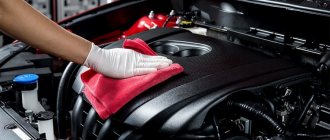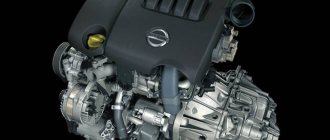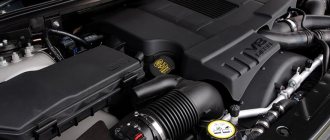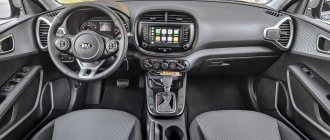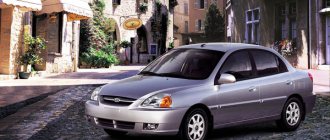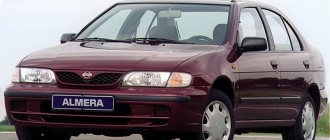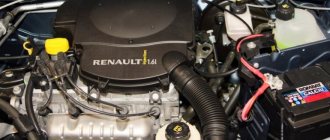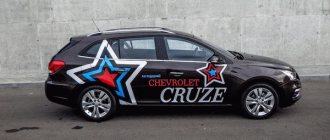There are many car designs. Because of this, disputes constantly arise between car enthusiasts about the advantages and disadvantages of one or another option. For example, which engine location is better: longitudinal or transverse.
To answer this question and, in general, to find out whether it is correct, it is necessary to consider the advantages and disadvantages of both options for the location of the power plant.
In general, the location of the engine, like other components, affects weight distribution and rational use of body volume and engine compartment space. In turn, this affects controllability, ease of maintenance and repair of the internal combustion engine, helps to maximize the potential of the vehicle in terms of driving performance, etc.
Transverse and longitudinal arrangement of engines: Pros and cons
The transverse type of installation of automobile engines dominates in modern automobile design, however, according to some experts, it is longitudinally mounted engines that provide maximum performance. What is the relationship between these two types of arrangement of power units in relation to each other?
It is worth noting that in addition to technical characteristics and performance indicators, the way the engine is oriented in the engine compartment of the car has a significant impact on the design of the car. When developing a car engine, engineers must answer several questions simultaneously: how to install the engine if the car model is rear-wheel drive? How to organize free space for other components and assemblies located under the hood of the car? What load will the mass of the engine exert on the car body?
Another very significant point will be the issue of aggregating existing transmissions with the engine being developed. After all, the overall impression of the car’s capabilities will depend on this.
Considering front-wheel drive cars with any of the possible engine orientations (transverse or longitudinal), we can say that each of them has certain advantages and disadvantages that affect both the handling of the car and its technical characteristics. An assessment of the totality of all features is the basis for the developers’ choice of a particular car model.
How to choose a power saw
The choice of electric chain saw should be based on how you plan to use it. If there is no need for frequent use, then it is enough to buy an inexpensive household saw. After all, why buy an expensive professional power tool and not use its full power?
Speaking about choosing a power saw, we should note companies that have already proven themselves:
- Bosch;
- Makita;
- Stihl;
- Skil.
Among domestic manufacturers, we can highlight the company Energomash. It is generally accepted that the best company among these is Bosch. Power tools from this manufacturer are the most expensive. The quality is always high class.
Engines with transverse type of arrangement
Engines with a transverse type of arrangement in the engine compartment are installed perpendicular to the direction of movement. Such motors have a horizontal arrangement in the engine compartment. Transversely mounted engines are usually used in front-wheel drive vehicles with front-mounted power units.
The beginning of the era of engines with a transverse type of arrangement is considered to be the period of design of the first Mini models. The designers of the British brand were among the first to ensure the transmission of torque from the engine to the wheels using rods. This revolutionary solution solved the problem of making the most efficient use of the car’s tiny engine compartment by the standards of that time, endowing it with a fairly powerful engine.
Using the transverse engine layout, Mini engineers managed to squeeze an engine with a relatively large displacement into the engine compartment of a compact city car. However, the transverse engine layout was used quite rarely on full-fledged supercars. One of the few supercars with a transversely mounted engine is the Lamborgini Miura.
One of the main features of “transverse” motors is the different lengths of the drive shafts that transmit motor traction from the engine to the wheels. The fact is that the designers had to install the gearbox on one side of the engine, located in the center of the engine compartment, and therefore the drive shafts installed through CV joints (constant velocity joints) must be of different lengths, which affects the uniform wear of these elements . Unlike transversely mounted power units, with a longitudinally mounted engine, the drive shafts are the same length, because here the engine and gearbox are installed “behind each other” along the same centerline.
The transverse layout of the power unit quickly became the norm when designing compact city cars of mass brands. Typically, transversely mounted engines have a relatively small displacement and no more than four cylinders. However, some automakers use a transverse layout for six- and even eight-cylinder engines. In this case, as a rule, a V-shaped arrangement is used.
The main reason for the widespread use of transverse engines is the maximum efficiency of using the engine compartment with a small chassis and overall dimensions of the vehicle. By installing the engine transversely in the engine compartment, the developer gets significantly more free space for the layout and design of the interior with the same external dimensions as a car where the engine is installed lengthwise. This quality of the car is especially valuable in urban use with a minimum amount of free parking space.
It is also worth adding a front-wheel drive type of transmission, which eliminates the organization of a central tunnel in the car interior for the driveshaft. A flat floor and maximally spacious interior are some of the key elements of comfort and ergonomics in modern compact city cars.
The transversely mounted engine at the front also has a certain influence on the driving dynamics of the vehicle. On vehicles with a similar layout, the bulk of the weight of the entire vehicle falls on the front wheel axle and front suspension. In this way, engineers solve one of the main problems, which is to provide traction to the drive wheels with minimal losses.
In addition, such cars are more predictable and controllable on slippery surfaces. And the absence of additional transmission components not only reduces the total weight of the vehicle, but also reduces the cost of production of the model as a whole.
Unfortunately, model models with a transverse power unit have very specific disadvantages. So, for motors of this type, an increase in torque is contraindicated. This is due to the same difference in the sizes of the rods. The angles of incidence for two shafts of different sizes will be different, and the longer the shaft, the lower its torsional rigidity will be. In turn, this provokes a drop in the efficiency of transferring traction from the engine to the wheels and causing the need for steering.
To combat this feature, the developers had to resort to certain engineering tricks. So, for example, one of the ways to balance the “torsional rigidity” indicator is to make one of the shafts hollow and the other solid. This solution is designed to balance the transmission of torque by shafts of different sizes. The first to translate such an engineering idea into reality were Ford engineers when developing one of the first generations of the Fiesta hatchback.
In addition to the indicated engineering drawback, the transverse arrangement of a car engine also has more banal disadvantages. Such motors are severely limited in terms of the ability to move them in the engine compartment, since they occupy the maximum possible space on both sides of the inner surfaces of the front wings of the car. And the possibility of increasing the power of a transversely oriented motor is quite small. That is why some sports car manufacturers who have chosen a similar type of engine arrangement for their car prefer a mid-engine option for installing the power unit.
Car layout diagrams
The arrangement of the main units - the engine, gearbox and main gear - relative to each other, within the body, is naturally called the layout diagram of the car.
1. The first and one of the most common schemes until recently is classical.
The classic layout means installing the engine in front longitudinally (i.e. along the axis of the car) above the front axle with drive to the rear wheels (the diagram is shown in Figure 3.5).
Figure 3.5 Classic car layout diagram.
In this case, the gearbox can be attached to the engine, or it can be located next to the main gear, and in some cases even have a common housing with the main gear (then they say that “the gearbox is in a block with the main gear”). In terms of the relative arrangement of the chassis and engine elements, everything is extremely simple, but there is a drawback: the tunnel in the bottom of the body, inside which passes the driveshaft that transmits rotation from the engine to the wheels, it “eats up” the legroom for rear seat passengers.
2. Longitudinal engine with front wheel drive (shown in Figure 3.6). This arrangement is typical for Audi cars. With this layout of the main units, the designers practically got rid of the central tunnel in the underbody, at least in the rear part of the cabin.
Figure 3.6 Longitudinal engine with front-wheel drive.
3. Transverse engine with front wheel drive (shown in Figure 3.7). The gearbox is connected to the engine and shares a housing with the main gear. The positive aspect of this design solution is the compactness of the entire power unit and the possibility of rational and full use of all the space inside the car (there is no central tunnel and a tunnel for the gearbox).
Figure 3.7 Transverse engine with front-wheel drive.
4. Longitudinal arrangement of the engine behind the rear axle with drive to the rear wheels (also called “rear-engine”) (shown in Fig. 3.8). This arrangement is now rare and is used mainly by Porsche.
Figure 3.8 Longitudinal arrangement of the engine behind the rear axle with rear wheel drive.
5. Longitudinal arrangement of the engine in front of the rear axle with drive to the rear wheels (shown in Fig. 3.9). The gearbox is located behind the engine.
Figure 3.9 Longitudinal arrangement of the engine in front of the rear axle with rear wheel drive.
This arrangement is sometimes referred to as “engine in base,” meaning that geometrically the engine is located within the wheelbase of the car (see “Basic technical characteristics of the car”).
Note By the way, there are options when, to obtain better weight distribution along the axles, the engine, located longitudinally in front, is shifted far behind the front axle, placing it within the wheelbase (this arrangement is shown in Fig. 3.10).
Figure 3.10 Longitudinal arrangement of the engine behind the front axle with rear wheel drive.
6. Transverse engine arrangement in front of the rear axle with drive to the rear wheels (Figure 3.11).
Figure 3.11 Transverse engine arrangement in front of the rear axle with rear wheel drive.
It is worth noting that almost any engine arrangement allows all-wheel drive (more on this in the “Transmission” chapter).
There are two main all-wheel drive options:
- Permanent all-wheel drive This is when all four wheels perceive rotation from the engine constantly.
- Plug-in all-wheel drive (most of all modern passenger cars are equipped with exactly this scheme). In this case, the front or rear wheels are connected (in addition to the main drive wheels) to the engine thrust through a special mechanism (clutch) only when the electronics deem it necessary, for example, if the drive wheels begin to slip.
Engines with a longitudinal type of arrangement
The longitudinal layout of power units is currently typically used for rear-wheel drive vehicles. Mounted precisely along the centerline of the machine, “longitudinal” motors provide a direct path for the generated thrust from the crankshaft to the gearbox.
Another advantage of “longitudinal” motors is the lower level of vibrations caused by the operation of the motor compared to their transversely oriented counterparts. However, despite the seemingly most effective transmission of motor power, from an engineering point of view, with longitudinally oriented motors, not everything is so simple either. First of all, difficulties arise precisely with the implementation of traction efficiency. After all, the rotational energy from the “longitudinal” motor must change direction by 90 degrees, and for this it is necessary to use a differential wheel drive. An engine with a longitudinal layout requires noticeably more space in the engine compartment, as a result of which the ergonomics and comfort of the car’s interior often suffer.
Choosing a power saw: direct and side motor
A chain saw is used to cut various materials. This is an indispensable tool for construction, for collecting firewood, and making wooden structures. More experienced craftsmen can use a chain saw to cut foam blocks and plastic. There are electric and gasoline-powered saws. The cost of both models is approximately the same, but electric saws are easier to maintain and are less likely to end up in a service center. An undeniable advantage of gasoline models is autonomy. You can get work done without being tied to an outlet.
In this article we will take a closer look at the features of the structure and operation of an electric saw. The optimal operating time for the tool is 15–20 minutes, after which you need to take a break. When choosing a unit, first of all you need to decide for what purpose you will need the tool. After this, you should decide on the location of the electric saw motor.
A car with a longitudinal or transverse engine: pros and cons
There are many car designs. Because of this, disputes constantly arise between car enthusiasts about the advantages and disadvantages of one or another option. For example, which engine location is better: longitudinal or transverse.
In general, the location of the engine, like other components, affects weight distribution and rational use of body volume and engine compartment space. In turn, this affects controllability, ease of maintenance and repair of the internal combustion engine, helps to maximize the potential of the vehicle in terms of driving performance, etc.
Car weight distribution
The location of the engine, gearbox and final drive affects the so-called weight distribution of the car, and the car’s handling, in turn, directly depends on it.
Vehicle weight distribution is the distribution of vehicle weight on the front and rear axles, expressed as a percentage. Simply put, when a car is standing on a surface, it presses on it with a certain force corresponding to its weight. The weight distribution along the axles depends on the design of the vehicle.
Note Weight distribution is indicated as a percentage, with the first number representing the weight on the front axle and the second number representing the weight on the rear axle. For example: “60% to 40%” or “50% to 50%”.
Longitudinal engine arrangement
The scheme in which the power unit in the car is installed longitudinally, that is, along the axis of the entire structure, is considered classic. Previously, as now, this arrangement was used for cars equipped with rear-wheel drive, and also often on all-wheel drive vehicles. Also, longitudinal engine installation is used for powerful sports cars (with rear-wheel drive, of course). In this case, the engine compartment is often located in the rear or middle part of the body.
After all, the rotational energy transmitted via the driveshaft to the rear wheels has to be redirected at an angle of 90 degrees, which is done through the differential. That is, additional elements are introduced into the design, which affects both the cost of the machine and its weight. Weight, in turn, affects fuel consumption.
Another disadvantage, at least for modern cities with heavy traffic and busy streets, is the increase in body size due to the engine compartment. If the external dimensions are not increased, then the space in the cabin will have to be reduced, thereby reducing comfort for passengers and the driver.
Understeer
Meanwhile, the transverse layout is only good up to a certain level. Its main disadvantage is the uneven distribution of masses. Almost all heavy units are concentrated in front of the car, and if only one person travels in the car, then the center of mass shifts to the nose of the car. The weight distribution of the car is distorted and becomes uneven. Approximately 60% of the mass falls on the front axle and only 40% on the rear, which greatly affects handling.
A front-wheel drive car with an unloaded rear behaves poorly in extreme conditions. Front-wheel drive vehicles tend to understeer. On a slippery road, they begin to drift to the side of the road in turns that cars with a longitudinal engine can easily pass at good speed. In general, to achieve good turning, you need ideal weight distribution, for which you have to turn the engine longitudinally again.
Transverse engine
In this case, the power unit is installed under the hood perpendicular to the axis of the car body. Currently, a transverse engine arrangement is used in most cases. Even among sports cars and supercars there are, although quite rarely, designs with just such an arrangement.
Thus, this design solution is used to save space with the small size of modern machines. It also adds comfort to the cabin due to the absence of a convex propeller shaft tunnel - the floor is flat. In addition, it turned out to be relevant for cars with front-wheel drive, since traction is transmitted to the front wheels almost without loss.
However, these types of car engine locations also have their drawbacks, which cannot be kept silent about. First of all, it is physically practically impossible to significantly increase the power of a “transverse” engine (by increasing the number of cylinders). Most of them have a relatively small displacement and only four cylinders.
Secondly, it eliminates the possibility of moving such engines in the engine compartment (which is important when swapping and tuning), since they often occupy all the free space.
We also note that the engineers also had to solve the problem that arose with the need for steering while driving. It arose due to the fact that the rods have different sizes (with a longitudinal arrangement the length is the same) and there is no ideal balance of torque. At the same time, the elimination of additional engineering deficiencies, as a rule, causes a slight increase in the cost of the design.
Let's sum it up
So, based on everything said above, we can draw the following conclusions:
- The debate regarding whether the engine is located longitudinally or transversely, which is better and which car to choose, does not make much sense. After all, both types of power plant layout have their advantages and disadvantages, of which there are approximately equal numbers.
We also recommend reading the article about the purpose and classification of internal combustion engines. From this article you will learn about the areas of application of internal combustion engines, features of use, etc.
- Both longitudinal and transverse engine layouts have a right to exist. Each solution is used to solve various engineering problems, as well as taking into account certain requirements for the vehicle.
Longitudinal arrangement of the motor
With this arrangement, the motor is located longitudinally, along the axis of the car. This option is considered a classic, although few such cars are produced today. As a rule, these are cars where the engine compartment is located at the rear or in the middle of the body. Some sports cars have a longitudinal engine arrangement. The point here is to minimize losses: the mechanical force from the crankshaft to the gearbox follows the shortest line if the engine is located longitudinally. In fact, this allows you to realize the full power potential of the unit. However, this design also has disadvantages. To transfer force to the rear wheels, it must be directed at a right angle. This means that additional components are needed that increase the size and weight of the machine. The greater the weight and dimensions, the greater the car’s “appetite” for fuel.
By placing the engine lengthwise, designers must either “steal” space from the people in the cabin, or increase the size of the car itself - here each manufacturer chooses its own path.
Longitudinal or Transverse Position of the Electric Saw Motor
How to choose a chainsaw. what to look for when purchasing and examples of good options
The chain saw has long been popular as a tool for small sawmills. To refuel it, you do not need to buy expensive fuel, as for gasoline analogues, but it is very convenient to use. This is a great option for short-term sawing of firewood or cutting branches, and the tool is always in sight and you just need to plug the plug into the socket to get started.
How to choose a saw with enough functions and not overpay extra? We will try to answer this question by considering the main characteristics of a quality tool.
Electric saw helps cut down small amounts of wood
content
Do you need an electric saw?
Before you start looking at specific models, you should determine if the tool is right for you. Chainsaws may be a different story. Some people like it, others don't. No. In most cases, negative attitudes are due to the wrong choice of tool type. For example, an electric saw is unlikely to cope with hours of cutting down trees. this can only be done with a professional chainsaw. Availability of cable. Another disadvantage of an electric tool is that it is tied to a power source. However, an electric saw can be your indispensable assistant in several cases:
The device can be used indoors
With the above factors in place, you can proceed with choosing the right electric saw.
How to choose a chain saw based on engine power
Cost of electric saws
You can buy a simple chain saw for 3-5 thousand rubles. Such units generally have a transverse motor arrangement, an instrumental chain tensioning mechanism, a power of up to 2000 W and a guide bar length of up to 40 cm. Products in the low price range, as a rule, are not highly reliable.
High-quality electric saws from world-famous brands are sold for 5-10 thousand rubles. Their power also, in most cases, does not exceed 2 kW, they are equipped with engines with both longitudinal and transverse locations, tool-free chain tensioning mechanisms, thermal relays, soft start and inertia brake functions, as well as other options that increase user safety.
Models with built-in batteries cost from 8 to 20 thousand rubles. Electric saws from well-known brands with a power of 1.8 kW and a cutting depth of up to 450 mm fall into the same price category. Most models are lightweight and are also equipped with additional functions that make work easier and extend their service life.
If you are planning to buy a reliable electric saw for work in the countryside, which will last 5 years with occasional use, pay attention to tools in the price range of 5-8 thousand rubles
Transverse motor arrangement
This scheme is now the most popular: you open the hood, and the engine is located perpendicular to the axis of the car. This saves space under the hood and allows you to make cars smaller and more maneuverable. In addition, traction to the rear wheels follows a straight path. This car is better to drive, because... the heaviest unit is located in front.
For the average car enthusiast, this is the best option. But for fans of non-standard cars, “working” with a car with a longitudinal engine is more interesting. The fact is that cars with transverse engines usually have less space under the hood, and it is impossible to install a more powerful engine without major changes to the engine compartment.
So, both types of engine layout have their pros and cons - here you need to proceed from the purpose for which the car is needed.
Which location is better depending on the tasks at hand?
When choosing a saw, the main thing you should focus on is the goal to achieve which the equipment is purchased.
If you plan to use the saw to form the crown of bushes or cut branches directly from trees, the choice should be made in favor of a compact model with a longitudinal slide. It is extremely mobile and indispensable when working in hard-to-reach places. It can be used at any angle and in any position.
For standard sawing of logs for subsequent chopping into firewood, a model with a transverse position is better suited. Such a saw is not only more powerful and lighter, but also cheaper in cost.
Varieties of front-wheel drive car layouts
In total, there are six types of front-wheel drive layout:
There are also three types of layout of the power unit itself with front-wheel drive:
Longitudinal installation of the engine in front of the axle
Schematic representation of the layout. In this variation of front-wheel drive, the engine is located longitudinally in the front overhang of the car, the gearbox is located inside the wheelbase, and the final drive is located between them. The layout of the power unit is thus consistent. The design of the transmission is simple, and there are prerequisites for unifying this unit with rear-engine models (for example, the VW Typ 010 automatic transmission, installed on both the rear-engine VW Transporter and the front-wheel drive Passat and Audi 80/100 models). The design of the gear shift drive in the case of a manual transmission is also relatively simple. The creation of all-wheel drive modifications is greatly facilitated.[5]
The longitudinal placement of the heavy engine completely in front of the axis of the front wheels ensures their constant good loading (more than 60% of the mass), and therefore high traction and grip properties, including on slippery and icy surfaces. Due to the initially high load on the front axle, a front-wheel drive vehicle of this configuration suffers least from the unfavorable redistribution of weight between the axles that occurs when placing passengers and cargo, accelerating and climbing. Also, the engine located longitudinally in the front overhang determines a large length of the deformation zone upon impact, and therefore high levels of passive safety.[5]
Wartburg 312 and 353 car frame with a longitudinal engine located in front of the front wheel axle.
The downside to this is that there is a lot of effort on the steering wheel, strongly requiring the installation of power steering. Front-wheel drive vehicles with a longitudinally mounted engine are also characterized by pronounced understeer when cornering and severe overload of the front axle when braking, causing an unfavorable distribution of braking forces and worse braking dynamics. In the case of installing a heavy and long engine, these disadvantages are significantly aggravated; additional inertial forces applied to the front axle due to the concentration of mass in the front overhang become noticeable, which worsens the trajectory stability of the car when turning. In addition, the length of the front overhang is greatest compared to other schemes, which, in turn, worsens geometric cross-country ability and complicates maneuvering when parking.[5]
In practice, designers usually try to find the optimal compromise in each specific case between good drive axle load and overall balancing considerations. For example, in old Audi and Volkswagen models with a longitudinal engine or Moskvich-2141, the front axle accounted for a little more than 60% of the vehicle’s weight, and the rear a little less than 40%, which ensured acceptable driving characteristics in combination with high by the standards of the front drive in terms of load capacity and maneuverability [6]. In the LuAZ-969V, due to the placement of the passenger compartment forward, the front drive axle accounted for almost 65% of the vehicle's weight, which resulted in high traction and acceptable cross-country ability to the detriment of handling at high speeds, which for this vehicle, due to its specific purpose, did not play a big role. The designers of the latest generation Audi A4, by shifting the power unit backwards, using light alloys in its design and transferring part of the equipment (for example, a battery) to the trunk, were able to achieve an almost uniform distribution of the vehicle’s weight along the axles (about 50×50) with the same layout scheme. which had a positive effect on handling at the cost of a certain reduction in the cargo and inertial characteristics of the vehicle (directional stability when driving in a straight line), as well as cross-country ability.
From the point of view of compactness, this scheme is unprofitable - the overall length of a car built using it turns out to be almost the same as with the classic layout. Some gains can only be achieved through a shorter luggage compartment with the same volume (due to a flat floor) and the use of specific techniques for arranging the engine compartment, such as placing the radiator on the side of the power unit, which also makes it possible to reduce the length of the front overhang. Moreover, this type of front-wheel drive is the most advantageous if it is necessary to accommodate a long engine, for example, an in-line five-cylinder on the same old Audi models.[5]
In view of the above set of advantages and disadvantages, this type of front-wheel drive is used mainly on relatively large cars - the European middle class and above: examples include almost all Audi models, a number of generations of the Volkswagen Passat, Renault 12 and Renault 18, Panhard Dyna Z , many Subaru models, Moskvich-2141. A few exceptions are represented by models of French origin with longitudinally compact air-cooled boxer engines - Citroën 2CV, Citroën Visa and Citroën GSA, as well as Alfa-Romeo with water-cooled boxer engines - Alfa Romeo Arna and a number of others. Also potentially beneficial with this arrangement is the use of V-shaped four-cylinder engines, but in practice such a solution is very rare - in fact, its occurrence in world practice comes down to a single power unit used on the Ford Taunus P4 / P6 and certain SAAB models, and also - the same LuAZ-969V and some experimental and home-made Soviet cars based on Zaporozhets units. This also includes cars of the DKW and Wartburg brands, which had compact three-cylinder engines (two-stroke), and models with also relatively compact Wankel rotary piston engines (NSU Ro 80). Previously, this arrangement was considered more suitable for installing an automatic transmission due to better conditions for placing a massive torque converter, but now the problem of adapting it to other types of front-wheel drive can be considered completely solved.
